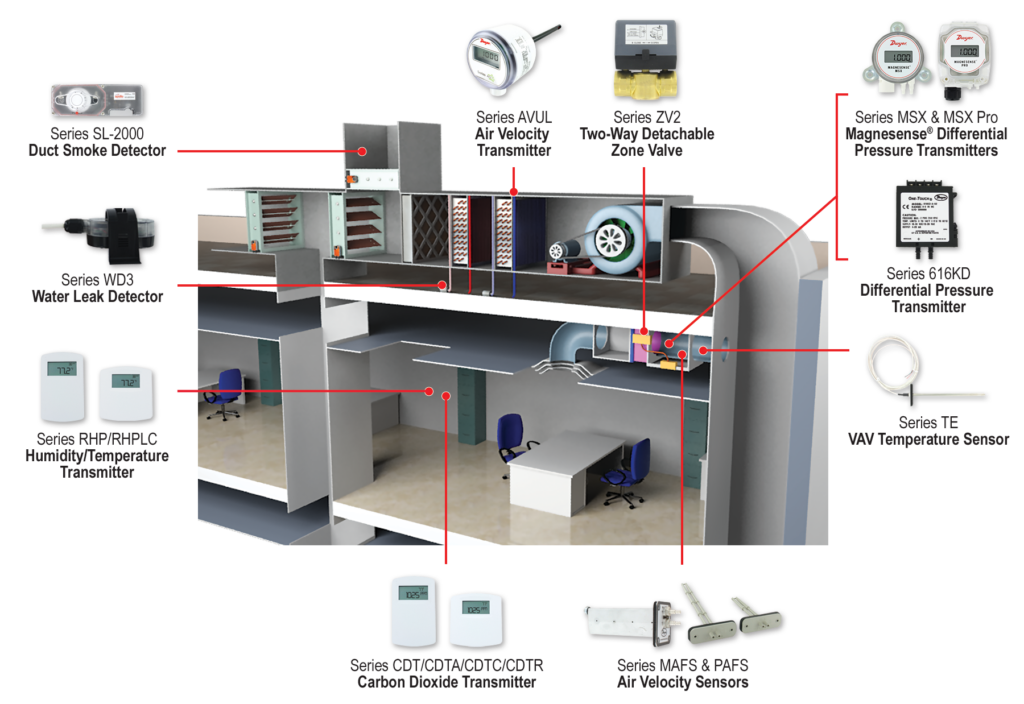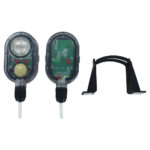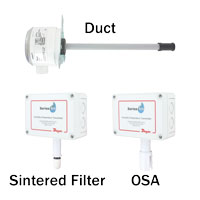 Picture this: you walk into an office building on a hot summer day. As the door closes behind you, you immediately feel the temperature change. It’s cool and refreshing, thanks to the terminal units working diligently behind the scenes. Terminal units, while often unseen and unheard, play a crucial role in maintaining a comfortable environment in various buildings, from offices to schools and hospitals. Let’s explore these components, the challenges they address, and how Dwyer’s range of products helps conquer these challenges.
Picture this: you walk into an office building on a hot summer day. As the door closes behind you, you immediately feel the temperature change. It’s cool and refreshing, thanks to the terminal units working diligently behind the scenes. Terminal units, while often unseen and unheard, play a crucial role in maintaining a comfortable environment in various buildings, from offices to schools and hospitals. Let’s explore these components, the challenges they address, and how Dwyer’s range of products helps conquer these challenges.
What is a Terminal Unit?
Simply put, a terminal unit is a device that controls the flow of air within a building’s HVAC system. Terminal units work in conjunction with air handling units to regulate the temperature, humidity, and air quality in individual rooms or zones, ensuring that occupants enjoy a comfortable and healthy indoor environment. Terminal units are typically installed at the end of ductwork and can be found in the form of fan-powered boxes, VAV (Variable Air Volume) boxes, or diffusers.

Challenges and Solutions
We’ve compiled a comprehensive list of some of the challenges commonly encountered by terminal units and HVAC systems, along with effective solutions to address them.
1. Smoke Detection in Ducts
- Problem: Smoke in ducts poses a severe fire hazard that often goes unnoticed. If smoke goes undetected, it can spread throughout the HVAC system and other parts of the building that could be occupied.
- Solution: The SL-2000 quickly senses smoke and triggers an alarm, allowing for a swift response to potential fire threats.
2. Water Leak Detection

- Problem: Leaks in HVAC systems can cause extensive damage or when undetected can lead to mold growth resulting in and compromisinge indoor air quality.
- Solution: The WD3 detects leaks promptly, enabling immediate action to mitigate damage and maintain a healthy indoor environment.
3. Consistent Humidity & Temperature
- Problem: Maintaining appropriate humidity levels in a building helps to optimize indoor air quality and omit the creation of an ideal environment for the spread of airborne infections. Having to install multiple devices to measure both humidity and temperature levels to maximize comfort and indoor air quality for occupants results in additional sensors installed in the space and increases time. Fluctuating humidity and temperature levels can lead to discomfort and health issues among occupants.
-

Temperature/Humidity Transmitters, Series RHP Solution: The RHP and RHPLC ensure precise monitoring and control and can be equipped as a combination humidity and temperature transmitter of these parameters, creating a comfortable and healthy indoor environment for occupants while reducing installation time.
4. Uneven Airflow Distribution
- Problem: Inconsistent airflow can lead to hot and cold spots within a building, causing discomfort and energy inefficiencies.
- Solution: The MAFS and PAFS Sensors precisely measure airflow, optimizing HVAC system performance and enhancing comfort.
5. Accurate Temperature Monitoring
- Problem: Inefficient temperature control can result in wasted energy and fluctuating comfort levels within different zones of a building.
- Solution: The TE VAV Temperature Sensor provides accurate temperature data to VAV systems, allowing for precise temperature regulation in each zone, maximizing comfort, and minimizing energy consumption.
6. Differential Pressure Monitoring
- Problem: Clogged filters and airflow obstructions can impede HVAC system performance, leading to reduced indoor air quality and increased energy consumption.
-

Magnesense® Differential Pressure Transmitter, Series MSX Solution: The 616KD and MSX Magnesense® Transmitters monitor pressure differentials across filters, enabling timely filter replacements and ensuring optimal airflow and system efficiency.
By addressing these common issues with our range of high-quality products, Dwyer Instruments empowers building owners and managers to create environments that are safe, comfortable, and energy-efficient. Our solutions are designed to enhance the performance and reliability of terminal units, ultimately improving the overall quality of indoor spaces.
To learn more about Dwyer products, visit our website. If you have any questions about selecting products for your application, the DwyerOmega Applications Engineers are available to assist by phone at (219) 879-8868 x6402, or by email at tech@dwyeromega.com.
At DwyerOmega, we enable our customers to improve the world, one measurement at a time. We’re dedicated to providing reliable and innovative solutions for HVAC applications, ensuring comfort, safety, and efficiency for buildings and their occupants.

